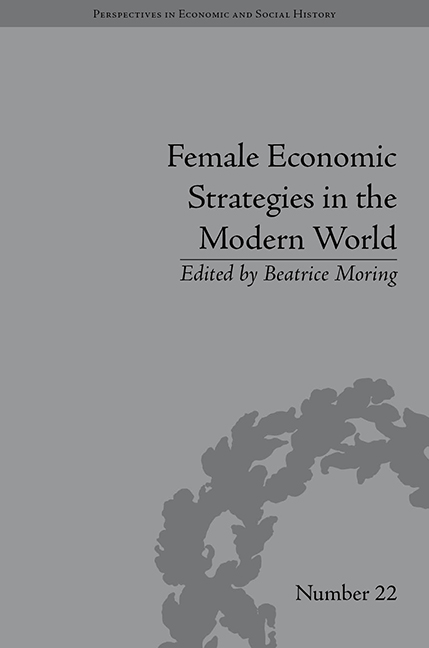Book contents
- Frontmatter
- Contents
- List of Contributors
- List of Tables
- Introduction
- 1 Widows, Family and Poor Relief in England from the Sixteenth to the Twentieth Century
- 2 Survival Strategies of Poor Women in Two Localities in Guipuzcoa (Northern Spain) in the Nineteenth and Twentieth Centuries
- 3 Women, Work and Survival Strategies in Urban Northern Europe before the First World War
- 4 Women, Households and Independence under the Old English Poor Laws
- 5 The Economic Strategies of Widows in Switzerland from the mid-Nineteenth to the mid-Twentieth Century
- 6 Mexico: Women and Poverty (1994–2004): Progresa-Oportunidades Conditional Cash Transfer Programme
- 7 Gender and Migration in the Pyrenees in the Nineteenth Century: Gender-Differentiated Patterns and Destinies
- 8 Women and Property in Eighteenth-Century Austria: Separate Property, Usufruct and Ownership in Different Family Configurations
- Notes
- Index
2 - Survival Strategies of Poor Women in Two Localities in Guipuzcoa (Northern Spain) in the Nineteenth and Twentieth Centuries
- Frontmatter
- Contents
- List of Contributors
- List of Tables
- Introduction
- 1 Widows, Family and Poor Relief in England from the Sixteenth to the Twentieth Century
- 2 Survival Strategies of Poor Women in Two Localities in Guipuzcoa (Northern Spain) in the Nineteenth and Twentieth Centuries
- 3 Women, Work and Survival Strategies in Urban Northern Europe before the First World War
- 4 Women, Households and Independence under the Old English Poor Laws
- 5 The Economic Strategies of Widows in Switzerland from the mid-Nineteenth to the mid-Twentieth Century
- 6 Mexico: Women and Poverty (1994–2004): Progresa-Oportunidades Conditional Cash Transfer Programme
- 7 Gender and Migration in the Pyrenees in the Nineteenth Century: Gender-Differentiated Patterns and Destinies
- 8 Women and Property in Eighteenth-Century Austria: Separate Property, Usufruct and Ownership in Different Family Configurations
- Notes
- Index
Summary
The nineteenth century saw new manifestations of poverty among the proletarian population in the industrialized countries of Europe. This new expression of poverty had different characteristics from those of the eighteenth-century agrarian societies, and was therefore subject to different solutions. The primary, underlying ties of solidarity which knitted communities together and provided protection for both families and individuals in a critical situation were broken by migratory movements and the process of urbanization. Poverty and destitution were to present their crudest aspect and submit the working classes to serious risks while, systems of mutual aid and, later, systems of compulsory assistance were slowly being set up by the states.
The event of industrialization had profoundly transformed society. The former farm workers, mutated into general labourers, populated the run-down neighbourhoods at the extreme of working and living conditions. Once mutual support systems had broken down and new difficulties had to be faced in order to survive, the poverty of these people became the object of interest for new studies in sociology and anthropology. Social reformers of both sexes deduced from their analyses that there existed a type of plague which was destroying the working classes and which they called ‘pauperism’. Some of these reformers (in particular, females), quickly verified that it was the women who fell into poverty more easily and more oft en than the men and, therefore, tried to find an explanation for this phenomenon.
- Type
- Chapter
- Information
- Female Economic Strategies in the Modern World , pp. 33 - 44Publisher: Pickering & ChattoFirst published in: 2014



